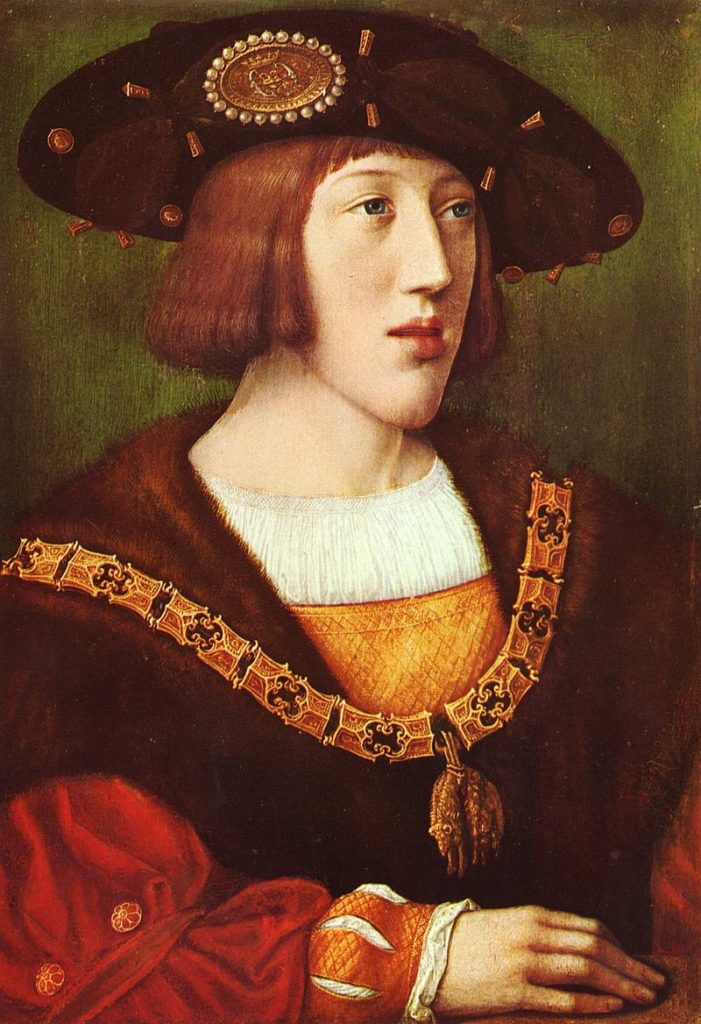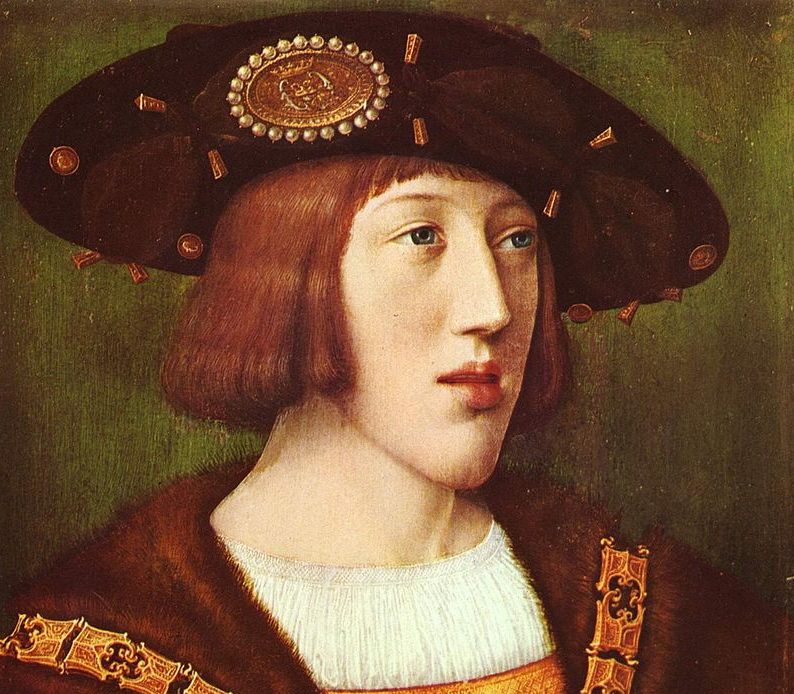
The reign of Charles V was a momentous era for Spain, indeed, all of Europe. It was also especially momentous for England: it was entirely because of Charles that the Pope refused to grant Henry VIII a divorce from Catherine of Aragon. This should have been a slam dunk for Henry (it was relatively standard practice when a monarch’s marriage did not produce an heir), except that Catherine was Charles’ aunt – and Henry was not looking to replace her with another political marriage…
Charles V is also of particular interest to Tudor enthusiasts because of the way his reign can be viewed in tandem with Henry VIII’s. Indeed the sixteenth century saw a rare parallel of monarchs: Henry VIII of England, Francis I of France, Charles V of Spain, and Suleiman the Magnificent of the Ottoman Empire were all born around the same time (Henry – 1491, Francis – 1494, Charles – 1500, Suleiman – 1494), acceded to their thrones around the same time (Henry – 1509, Francis – 1515, Charles – 1516, and Suleiman – 1520), reigned for similar lengths of time (35-45 years or so) during which they oversaw enormous cultural advances, then died around the same time (Henry and Francis – 1547, Charles – 1558 and Suleiman – 1566).
Of the European rulers, Charles V was the most powerful. As the heir to three of Europe’s leading dynasties (Hapsburg, Valois-Burgundy and Trastamara), Charles governed the Spanish Empire, the Netherlands, and the Holy Roman Empire (covering key parts of Germany, Italy…). As Wikipedia puts it, “his domains spanned nearly four million square kilometers, and were the first to be described as ‘the empire on which the sun never sets’. He might well have annexed France and England (though I could get beat up for saying this…), were it not for his ongoing border disputes with Suleiman, who ruled over 20-30 million people, primarily in the Middle East and North Africa.
In terms of looks, Charles was on the short side and inherited the unfortunate Hapsburg jaw. Perhaps this is why Henry was not as obsessively jealous of, and competitive with, him the way he was with Francis. It also helped that they began their respective reigns as allies, with Charles carefully deferring to his “elder uncle” for a time. Whatever the reason, the two countries spent more time as allies than as enemies over the Henry/Charles years, and set the stage for the marriage of Mary I with Charles’ son Philip II (though as a child she had been promised to Charles…talk about a limiting precontract!).
SOURCES:
For this article, my immediate sources came from Wikipedia – their many entries about Charles V, Henry VIII, Francis I, Suleiman the Magnificent, and so many more. I can’t tell you who first led me to see the four monarchs as contemporaries that shaped each others’ lives…
* * *
If you like my posts, you’ll love my books! My Seymour Saga trilogy tells the gripping story of the short-lived dynasty that shaped the Tudor Era. Jane the Quene skews romantic, The Path to Somerset is pure Game of Thrones (without the dragons), and The Boy King is a noir coming-of-age. Get them now through Amazon, Barnes & Noble, Kobo, and Apple, or even your local independent bookstore!

(PS Already read them? Did you love them? Then please review them – even just a stars rating! It makes a huge difference in helping new readers find them and would mean the world to me!)

Be First to Comment